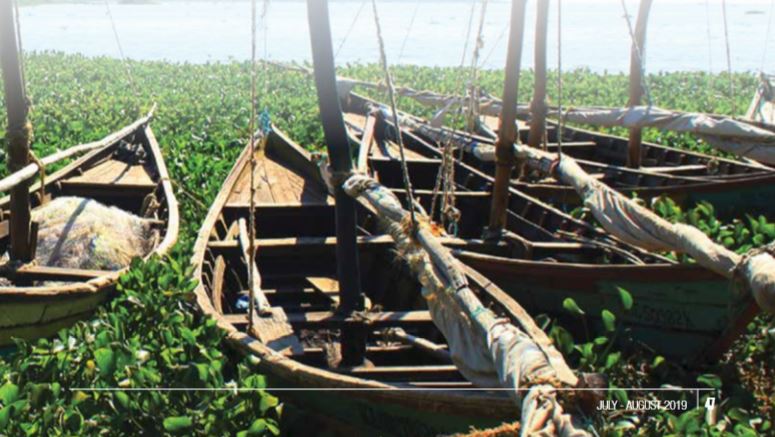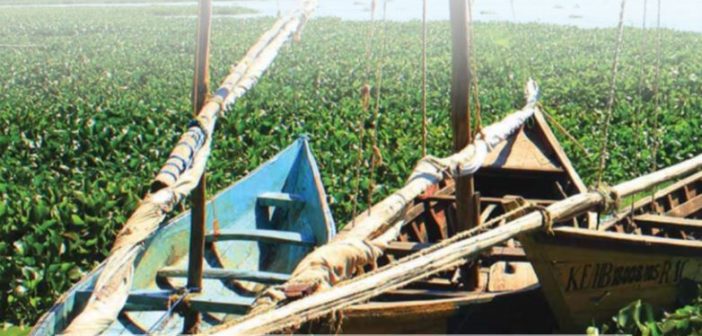By Angela Mutiso
Fishing can be fun if you do it right, but if you mess it up, so much can go wrong. Environmentalists are concerned that several fishing practices are becoming harsher to delicate territories and are asking you to join them in building a future that will safeguard the fishes in our waters.
What is destructive fishing?
Destructive fishing practices are practices that easily result in irreversible damage to aquatic habitats and ecosystems. Many fishing techniques can be destructive if used inappropriately, but some practices are particularly likely to result in irreversible damage. These practices are mostly, though not always, illegal. Where they are illegal, they are often inadequately
enforced (Wikipedia) In Kenya, overfishing in Lake Victoria has been a great concern. Apparently, the disappearance of the hyacinth weed has also led to a big decline in shallow water fish species. This news is amazing; because for a long time this weed has been reviled by fishermen, yet it creates a conducive environment for them to catch fishes, rather than having to go further into the lake to get them. The native species of lung and mud fish species that flourish under the carpet of such vegetation have dropped in numbers, causing a lot of apprehension.
The destruction has also been witnessed in Kenya’s cost. A recent report published by the Western Indian Ocean Marine Science Association Zanzibar, Tanzania (UNESCO/IOC Project office
for IODE Oostende, Belgium), explains that the social and economic dimensions of destructive fishing activities studied in the multi-gear fishery of the Southern Kenya Coast, discovered the following; Fishing gears identified to be destructive in order of abundance were beach seines which are used by 29% of the respondents, spearguns which are used by 32%, ringnets which are used by 5%, small mesh size nets used by 3%, small mesh size basket traps used by 1%, explosives and fishing poison especially traditional plant poison. It was found out that 70% of the respondents use destructive fishing methods. 49% of those who use destructive fishing techniques were the migrant fishermen.
Nonetheless, there is hope… Standard media reported that while speaking at an occasion to mark World Fisheries Day, Acting Cabinet Secretary for Agriculture, Adan Mohammed, said efforts to transform this sub-sector had gained steam to boost food security, exports and rural livelihoods. “The Government is committed to the development of a robust fisheries sub-sector as a means to boost export earnings, achieve food and nutrition security and create employment,” Mohamed said. (World Fisheries day is celebrated every year on November 21 throughout the world by fishing communities. This day is celebrated through rallies, workshops, public meetings, cultural programs, dramas, exhibition, music show, and demonstrations to highlight the importance of maintaining the world’s fisheries. World Fisheries Day helps in highlighting the critical importance to human lives, of water and the lives it sustains, both in and out of water. Water forms a continuum, whether contained in rivers, lakes, and ocean).
The report further says that Kenya has one of the most vibrant fisheries sector in the region – thanks to state incentives that promote investments in aquaculture. The country earned Sh4.6 billion ($45 million) from the export of 10,165 metric tonnes of fish in 2013. In 2014, Kenya’s total fish production stood at 193,106 tonnes. The minister said the Government has accelerated
the implementation of a strategic plan to transform the fisheries sector in line with vision 2030 blueprint. Statistics from the Kenya Marine and Fisheries Research Institute show that fish production in the lake has plummeted by 50 per cent in the past decade. It is worrying, that a lot of the fish sold in Kisumu’s biggest fish market is from China, and is cheaper.
Discussing destructive fishing practices WWF (panda.org) explains what happens, and how negative practices are destroying the environment… briefly;
Cyanide fishing: Some 20,000 tonnes of live fish are eaten annually in the restaurants of Hong Kong – and for every live fish caught using cyanide, a square metre of their coral reef home is killed.
Dynamite fishing: In this technique, dynamite or other explosives are set off under water. The dead fish floating to the surface are then simply scooped up. The explosives completely destroy the underwater environment, leaving it as rubble. Dynamite fishing has contributed to massive destruction of, for example, Southeast Asian coral reefs over the past 20 years.
Ghost fishing: Ghost fishing occurs when fishing gear is lost or abandoned
at sea. The gear can continue to catch fish, dolphins, whales, turtles, and other creatures as it drifts through the water and after it becomes snagged on the seabed. When driftnets were used on the High Seas, an estimated 1,000km of ghost nets were released each year into the North Pacific Ocean alone. Although the current contribution of ghost fishing to bycatch is unknown, it is likely to have a large impact. One survey estimated that a quarter of the rubbish on the bottom of the North Sea is fishing nets, while fishers speak of a dolphin and turtle graveyard among the nets that drape the cliffs of Cape Wessell, Northern Australia.
What is being done to stem destructive fishing practices?
A lot is being done (perhaps not enough) to stem destructive fishing around the world. Below are some notable efforts. The Pew Research Center is a nonpartisan American fact tank based in Washington, D.C. It provides information on social issues, public opinion, and demographic trends shaping the United States and the world (Wikipedia). Pew’s project on ending illegal fishing is (among other things), working around the world to develop an international fisheries enforcement regime that will significantly reduce unreported, and unregulated (IUU) fishing. In an article on How to End Illegal Fishing, Pew says this work focuses on industrial-scale fishing, cooperation among key partners for policy change and implementation, due diligence by seafood buyers, and ensuring that authorities have the tools they need to crack down on this activity. Their objective is to put a global system in place that would provide a cost-effective way to identify, monitor, deter, and prosecute the operators and those ultimately benefiting from and supporting illegal fishing. The report further notes that every time wildcaught fish is bought at a restaurant, store, or waterfront dock, there is a 1 in 5 chance that it was caught outside of the law. Illegal and unreported fishing worldwide accounts for up to 26 million metric tons of fish annually, worth up to $23.5 billion.
Farm Africa on its part, reported that wild fish stocks in western Kenya are dwindling. Lake Victoria is suffering from overfishing, and tilapia, the most popular freshwater fish in Kenya, is becoming scarce. Farm Africa is promoting fish production in freshwater ponds to help protect Lake Victoria’s strained resources and provide a growing population with a sustainable source of fish.

In the meantime, The Outcomes and Implementation Statements of the World Summit on Sustainable Development, held in Johannesburg in
2002, contain a commitment to phasing out destructive fishing practices in the marine environment by the year 2012. All nations attending the summit supported this statement.
Many nations had made commitments to end destructive fishing practices much earlier. In 1999, 124 nations explicitly gave their support to the FAO Code of Conduct for Responsible Fisheries 1995 through the Rome Declaration on Responsible Fisheries. The list of these nations includes most of the major fishing nations of the world. However, while the Code of Conduct contains a commitment to end destructive fishing practices, the Code contains no timelines.
Fish facts
- Some fish species like brook trout cannot live with much salt in the water, other fish, such as tuna and, need salt, and some, such as striped bass, can live in salt or freshwater. Fish also need a certain amount of oxygen in the water.
- Fishing from a boat enables you to cover more water than fishing from shore and reach distant spots, frequently with deeper water.
- Fish have gills that extract oxygen from the water around them. • There are over 30000 known species of fish.
- Some flatfish use camouflage to hide themselves on the ocean floor.
- Female dolphins are called cows, males are called bulls and young dolphins are called calves.(onekindplanet)
- Dolphins are intelligent, friendly mammals that like to play tricks. They have been known to save humans in trouble, and take them to the shore.





